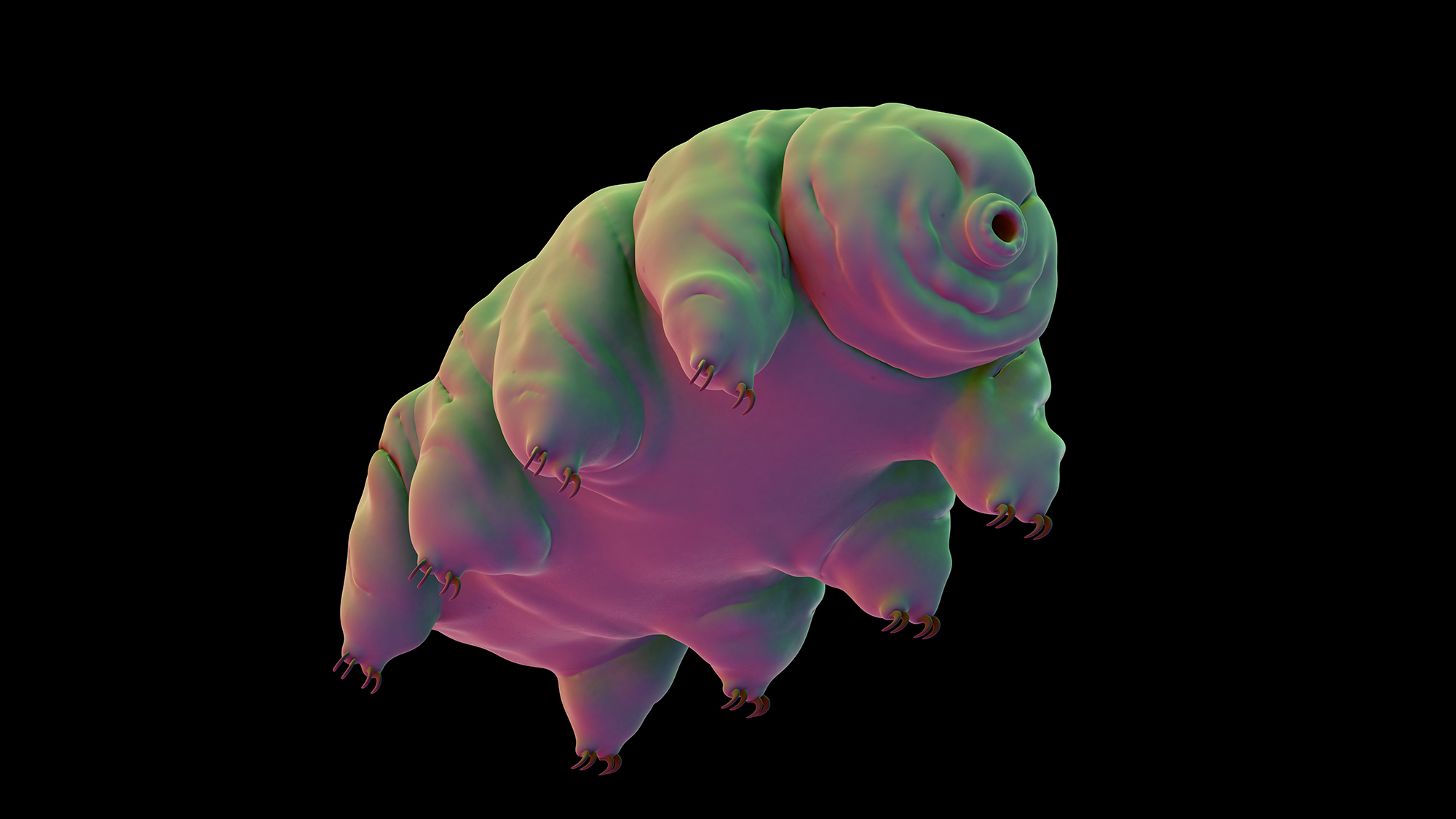

Tardigrades are going under the knife. At least their genes are. A team at the University of Tokyo in Japan have successfully edited tardigrade genes using CRISPR. These “water bears” or “moss piglets” are ultra-resilient microscopic animals, and this closer look at their genes is a step towards understanding the genetic basis for surviving extreme conditions. The findings are described in a study published June 13 in the journal PLOS Genetics and could have potential medical applications, particularly with human organs.

The ultimate survivors
There are over 1,300 species of tardigrades that live in a wide variety of environments–on flowering plants, in damp moss, sand, fresh water, and the ocean. Most of these invertebrates range from about 0.002 to 0.05 inches long.
[Related: Tardigrades go where the slime takes them.]
Tardigrades can survive extreme heat, cold, drought, and even in the cold vacuum of space. They’ve been attracting the curious eyes of scientists as far back as 1773, since few organisms can withstand these extremes. Uncovering their sturdy secrets could have scientific applications.
“To understand tardigrades’ superpowers, we first need to understand the way their genes function,” study co-author and bologist Takekazu Kunieda said in a statement.
Knock-out editing vs. knock-in editing
In the study, the team used Ramazzottius varieornatus, a very tolerant species of tardigrade. They used a recently developed technique called direct parental CRISPR (DIPA-CRISPR).This method is based on the Nobel prize winning CRISPR gene editing technique, which is like a genetic scalpel that can slice and modify genes more efficiently.
[Related: What’s going on with CRISPR gene editing? ]
DIPA-CRISPR works a little differently than regular CRISPR. It can alter the genome of a target organism’s offspring. DIPA-CRISPR has been shown to work on insects, but according to the team, this is the first time that it has been used on non-insect organisms.
“My team and I have developed a method to edit genes—adding, removing or overwriting them—like you would do on computer data,” says Kunieda. “This can now allow researchers to study tardigrade genetic traits as they might more established lab-based animals, such as fruit flies or nematodes.”
Ramazzottius varieornatus is an all-female tardigrade species that reproduces asexually. Unlike other animals, almost all of the offspring have two identical copies of the same edited code. This makes these tardigrade ladies ideal candidates for DIPA-CRISPR.

“We simply needed to inject CRISPR tools programmed to target specific genes for removal into the body of a parent to obtain modified offspring, known as ‘knock-out’ editing,” study co-author and Chiba Institute of Technology biologist Koyuki Kondo said in a statement. “We could also obtain gene-modified offspring by injection of extra DNA fragments we want to include; this is called ‘knock-in’ editing.”
Knock-in editing allowed scientists to precisely edit tardigrade genomes, so that they could control the way that individual genes are expressed.
Human organ applications
Tardigrades have a unique ability to survive extreme dehydration for long periods. They can enter a tun state and go dormant when they sense danger, repair their own radiation-damaged DNA, and also use a special kind of gel protein in their cells.
[Related: Scientists discovered an extremely rare tardigrade fossil trapped in Dominican amber .]
Interestingly, this gel protein trait can be applied to human cells. Kunieda and other tardigrade researchers believe that it is worth exploring if an entire human organ could be successfully dehydrated and rehydrated without degradation in the future. This could be potentially life-saving and revolutionize the way organs are donated, transported, and used in surgery.
“I understand some people feel anxious about gene editing, but we performed the gene-editing experiments under well-controlled conditions and secured the edited organisms in a closed compartment,” said Kunieda. “CRISPR can be an incredible tool for understanding life and aiding in useful applications that can positively impact the world. Tardigrades not only offer us a glimpse at what medical advances might be possible, but their range of remarkable traits means they had an incredible evolutionary story, one we hope to tell as we compare their genomes to closely related creatures using our new DIPA-CRIPSR-based technique.”